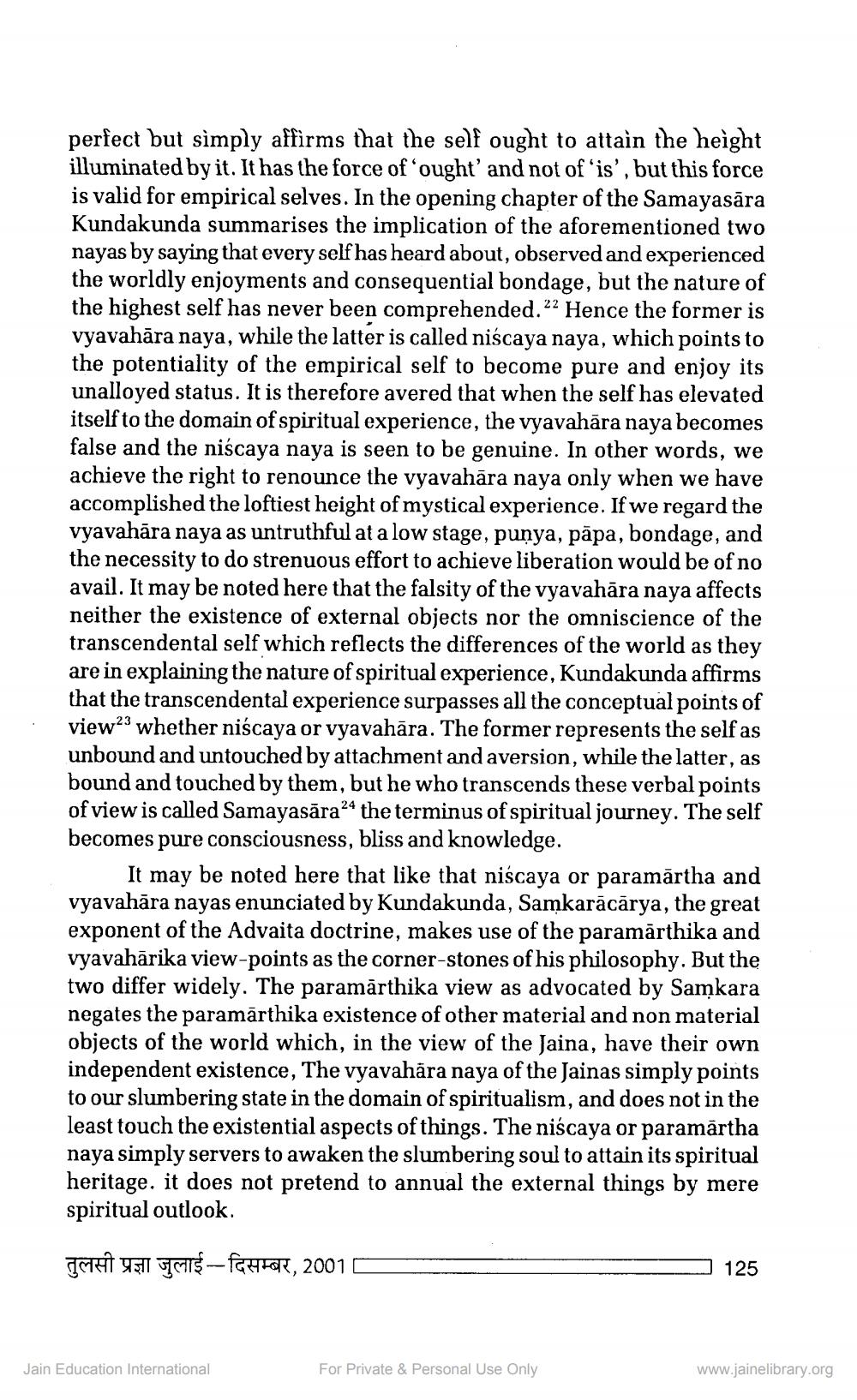________________
perfect but simply affirms that the self ought to attain the height illuminated by it. It has the force of 'ought and not of 'is', but this force is valid for empirical selves. In the opening chapter of the Samayasāra Kundakunda summarises the implication of the aforementioned two nayas by saying that every self has heard about, observed and experienced the worldly enjoyments and consequential bondage, but the nature of the highest self has never been comprehended.22 Hence the former is vyavahāra naya, while the latter is called niscaya naya, which points to the potentiality of the empirical self to become pure and enjoy its unalloyed status. It is therefore avered that when the self has elevated itself to the domain of spiritual experience, the vyavahāra naya becomes false and the niscaya naya is seen to be genuine. In other words, we achieve the right to renounce the vyavahāra naya only when we have accomplished the loftiest height of mystical experience. If we regard the vyavahāra naya as untruthful at a low stage, punya, pāpa, bondage, and the necessity to do strenuous effort to achieve liberation would be of no avail. It may be noted here that the falsity of the vyavahāra naya affects neither the existence of external objects nor the omniscience of the transcendental self which reflects the differences of the world as they are in explaining the nature of spiritual experience, Kundakunda affirms that the transcendental experience surpasses all the conceptual points of view23 whether niscaya or vyavahāra. The former represents the self as unbound and untouched by attachment and aversion, while the latter, as bound and touched by them, but he who transcends these verbal points of view is called Samayasāra24 the terminus of spiritual journey. The self becomes pure consciousness, bliss and knowledge.
It may be noted here that like that niscaya or paramārtha and vyavahāra nayas enunciated by Kundakunda, Samkarācārya, the great exponent of the Advaita doctrine, makes use of the paramārthika and vyavahārika view-points as the corner-stones of his philosophy. But the two differ widely. The paramārthika view as advocated by Samkara negates the paramārthika existence of other material and non material objects of the world which, in the view of the Jaina, have their own independent existence, The vyavahāra naya of the Jainas simply points to our slumbering state in the domain of spiritualism, and does not in the least touch the existential aspects of things. The niscaya or paramārtha naya simply servers to awaken the slumbering soul to attain its spiritual heritage. it does not pretend to annual the external things by mere spiritual outlook.
IGHT YET MIS- Fasole, 2001
125
Jain Education International
For Private & Personal Use Only
www.jainelibrary.org




